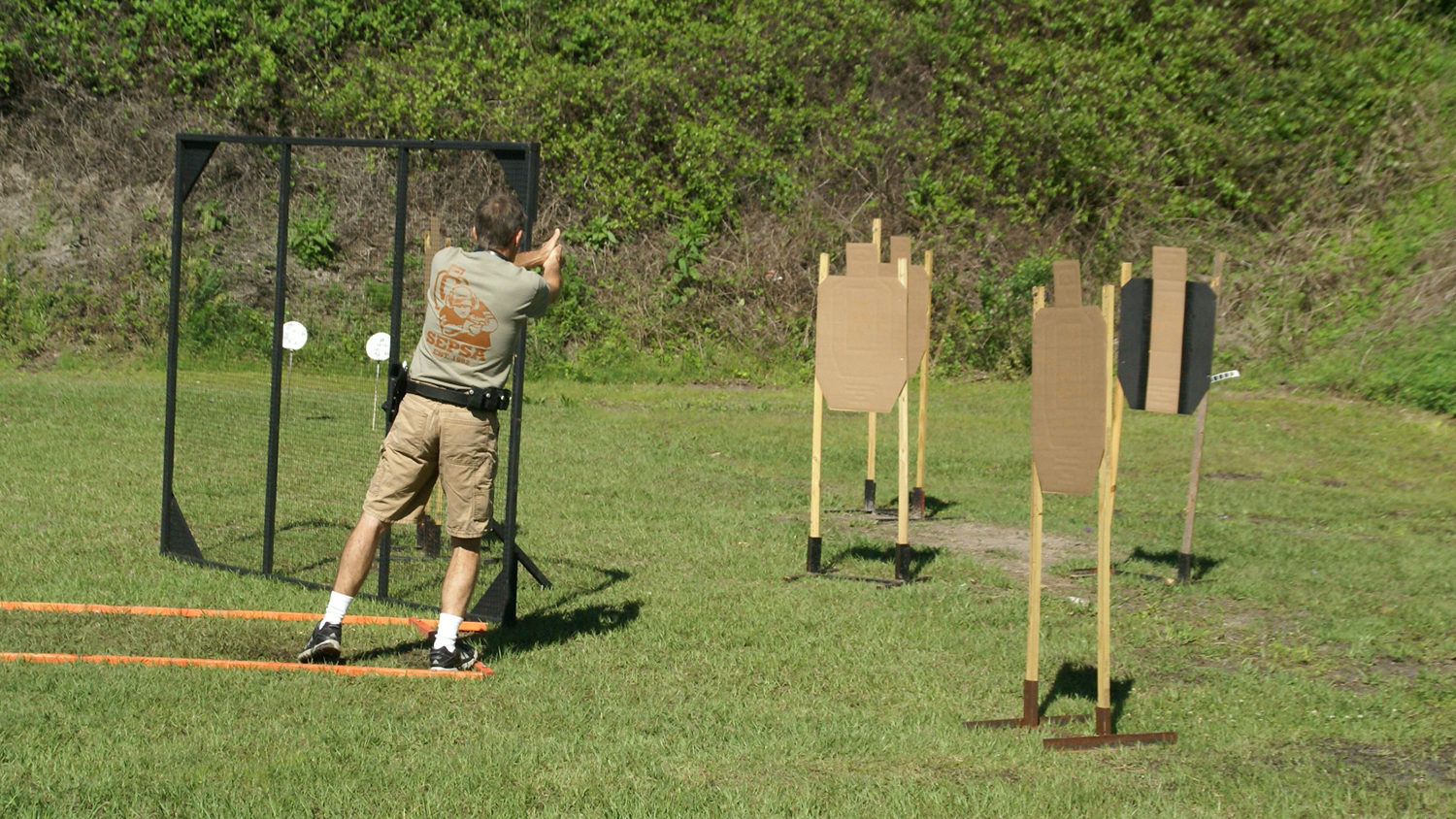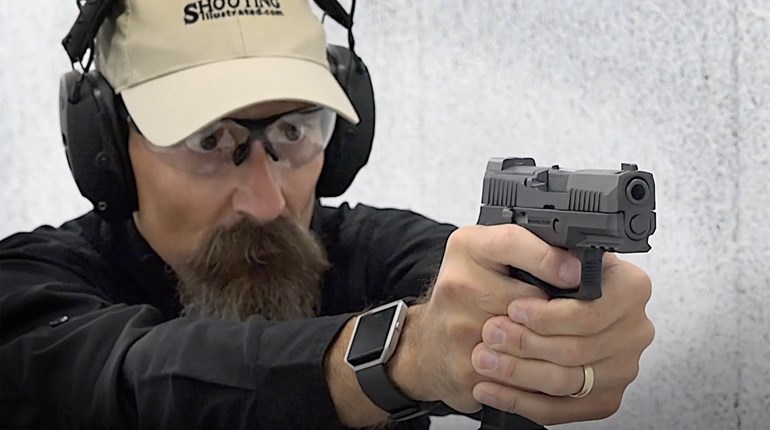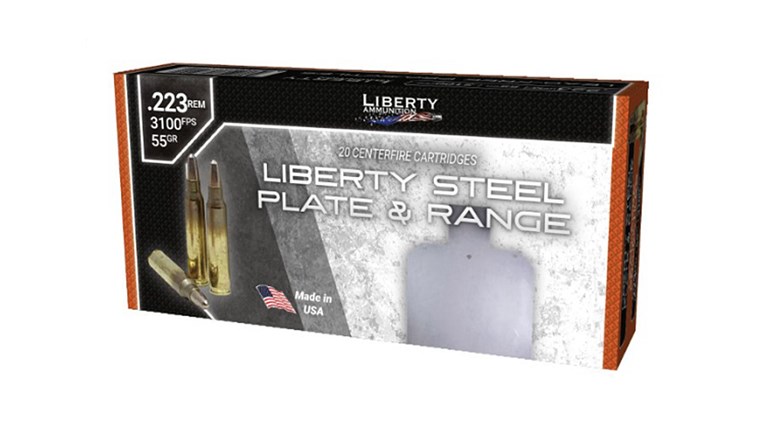
Above: A simple, and inexpensive, cut-out target with a white sheet of paper taped to the back makes it easy for a shooter to tune their focus to steel.
You'll see it happen at any action pistol match, whether it's USPSA, IDPA, or ICORE. An otherwise competent shooter begins a stage by smoothly engaging a number of cardboard targets and then encounters a steel target. Their first round misses, then the second, and sometimes even the third. Eventually the steel drops and the shooter goes back to ripping through the remaining cardboard targets.
This is a shooter who can put most of their rounds into the A or -0 zone of the cardboard targets. So, what's different about steel? The difference is that it is “different.”
Steel targets, whether knock down plates or poppers, are a different shape and color (mostly white) as opposed to the buff colored cardboard targets that normally comprise 90 percent, or more, of an action pistol match. They are also significantly smaller. Unless a shooter includes Steel Challenge in their match schedule they are not targets that are seen all that often.
In the rush to zip through a stage this sudden appearance difference often causes shooters to look at the target (target focus) instead of their sights (sight focus). The result is a misalignment of the sights. That's not too bad on paper targets because if you miss the A or -0 zone there are outer scoring rings that will result in at least some acquired points. The smaller steel targets are not so forgiving. It's either a hit or a miss, and if the shooter is focused on the target instead of their sights a miss will normally result. The shooter then eats the time on the first shot, and the split time on any additional misses. It all adds up on the score.
Target focus can affect any shooter, but those using red dot sights don't suffer on steel because target focus is what is properly done with a red dot: focus on the target and the dot superimposes onto it. With iron sights the focus has to be on the sights to drop steel. Yet many shooters commonly suffer from target focus when that infrequent steel target pops up.

Those who shoot Steel Challenge know that well. And this game is excellent practice for steel targets in the other games. It's simply a matter of programming the 'mental computer' to “See White—See Sights”.
If Steel Challenge isn't available, paper targets can work well for practice sessions, and making effective targets is easy and inexpensive. Take a standard cardboard target for the game you play (USPSA, IDPA, ICORE) and, using a razor knife, cut out an eight-inch circle in the center. For IDPA and ICORE just follow the perforated lines to remove the A or -0 zone. For USPSA center the circle in the middle of the A zone. Then flip the target onto its front and tape a piece of white copy paper over the hole on the back side.
The resulting target will show a clean white circle against a buff-colored background; which is how the majority of steel targets will appear against the berm on most ranges. But it also shows you the same 'silhouette' as the paper targets you normally engage, with the steel simulator right where you'd want your rounds to go on the paper targets. Call it “cross training”, but shooters can experience the best of both.
Another advantage to these targets is they will last a long time, which saves money. The only holes that need pasting are those outside the white. When the white gets too shot up, replace it with a clean sheet of copy paper. If you need some quick tuning for an upcoming match and want a standard target, just replace the white paper with brown cardboard. I have some that have lasted a dozen range practice sessions and several hundred rounds.
While you're concentrating on the holes in the white, don't ignore the holes outside of it. They can provide valuable information to help sharpen skills. Are your misses high? Then you're not getting your front sight down from recoil. Missing low? That indicates too hard a post ignition push on the gun and driving the sights down. Misses to one side or the other will show that you are triggering the shot either too quickly coming into the target, or too late as you swing through it. Where you miss the white “steel” circle can tell you more about your technique than where you hit it.
There are a number of drills that can be productive practice with these paper targets. The previously published Transition Drill is one of the best. And if you set up five targets you can also get excellent practice for Steel Challenge without having to invest in steel plates. The Double Tap Drill is another useful expenditure of ammo. Distances from 10- to 20-yards are appropriate.
The objective is to see enough white 'steel targets' to program your mind to automatically 'See White—See Sights'. That's the key to beating the white steel blues.


































